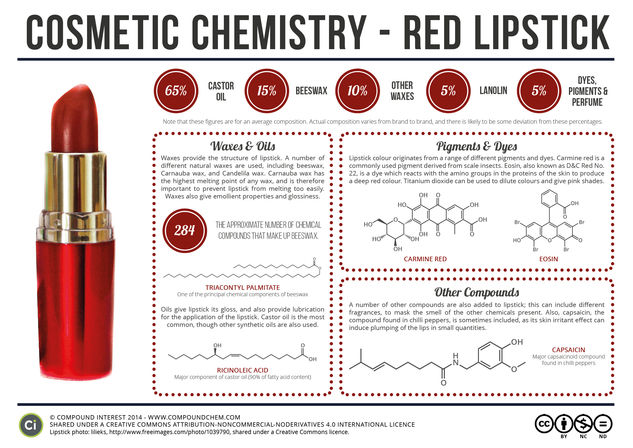© Compound InterestThe Compounds in Red Lipstick
Lipstick is one of the most commonly used cosmetic products – and a range of chemicals are required for its production. The choice of these ingredients is carefully considered to provide the desired colour, glossiness, and indelibility. A single stick of lipstick will contain several hundred different chemical compounds, but there are a few substances and compounds whose inclusion is essential.
An average composition of lipsticks is given in the graphic, but, in truth, this can be widely varied from lipstick to lipstick. Generally, however, waxes and oils make up the bulk of lipstick’s composition. Waxes are perhaps the most important, as they are crucial for the structure and shape of the lipstick. A range of different naturally occurring waxes can be utilised, with beeswax commonly a major constituent. Beeswax is composed of around 300 different chemical compounds; the principal compounds are esters, which make up around 70% of the composition. The remaining 30% of compounds includes organic acids and hydrocarbons.







